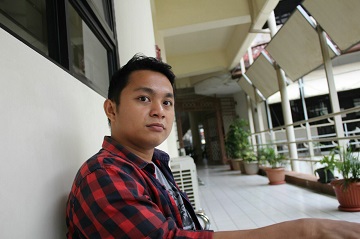IPB Students Does Seaweed Bleaching by Eco-Friendly Materials

Seaweed is one of the main fisheries commodity that reliable in fishery product processing industry. The type of seaweed that has economic value and big chance to develop is Euchema cottonii. This type of seaweed contains kappacarrageenan that has strong gel characteristic. Carrageenan can be made as the raw material of food industries, pharmacies, and cosmetics.
Fikoeritrin is a dominant pigment causing the color red in E. cottonii. Other compound contains in E. cottonii is cellulose causing the color of seaweed become darker. The high cellulose content can affect the level of color in seaweed. This cellulose and pigment can not separate so it can cause carrageenan produced in dark color.
The processing of E. cottonii to become carrageenan does bleaching process using hydrogen peroxide (H2O2). This H2O2 usage has weakness about leaving residue. Higher H2O2 concentrate then higher residue produced. This material usage needs long time and huge number.
From the matter, Theo Arthanugrah Saota, Fisheries Process Technology Department Student, Marine Science and Fisheries Faculty Institut Pertanian Bogor (IPB) tries to analyze easy technical seaweed bleaching to produce high quality carrageenan.
Theo does research by the title The Effect of Bleaching Temperature in Peracetic Acid on Semi-Refined Carrageenan. This research under guidance Dr. Uju and Prof. Dr. Santoso.
“Semi-Refined Carrageenan or SRC white color is one of the grade quality indicator people favorite. But, bleaching using H2O2 leaves residue on SRC. Then, I try to use peracetic acid or PAA as bleaching material and discover the impact to carrageenan characteristic produced,” Theo says.
Theo chooses PAA because this material is eco friendly whitening. PAA residue looses to oxygen and biodegradable acetic acid. On his research, bleaching process does at 30 – 80 degree Celsius heat in 30 minutes.
“PAA usage as bleaching material at different temperature increase white degree SRC, but can decrease sugar, gel strength, and viscosity. Bleaching temperature treatment can increase SRC white degree to 1.6 times from SRC without bleaching,” he says.
Low temperature bleaching produces high rendemen and gel strength compares to high temperature bleaching. Highest SRC white degree (66.52%) obtains PAA treatment 2% at 80oC degree heat. Bleaching on SRC produces viscosity 776,64-796,68 cP with gel strength score from 28,85 to 212,06 g/cm2.
“This research gives the information about the effect of using peracetic acid as the seaweed bleaching material. Next, the SRC extraction result can use to waste processing,” he adds. (NR)



